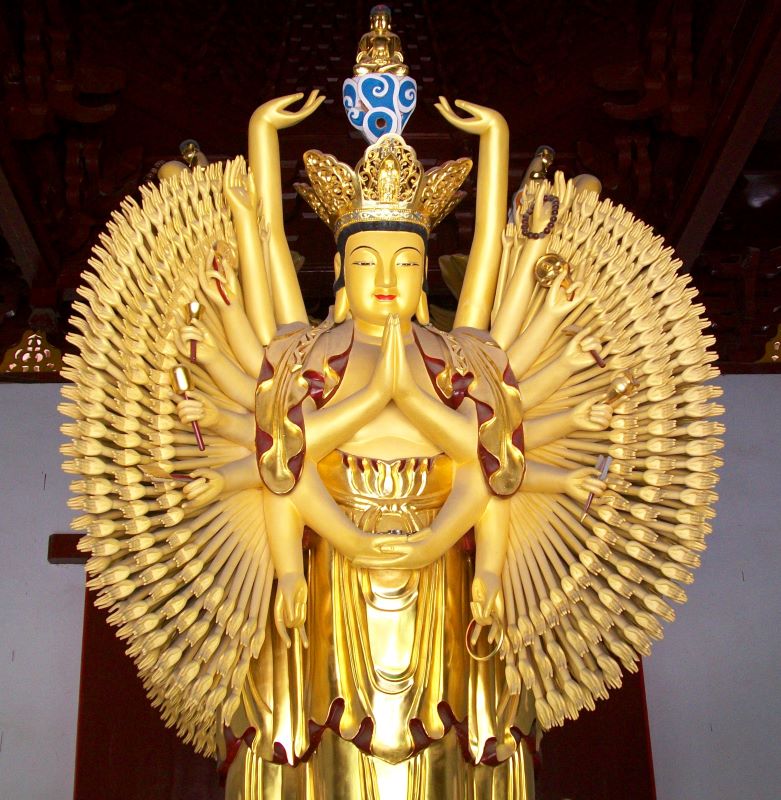Mahayana is one of the primary branches of Buddhism, phrase derives from Sanskrit
Mahayana is one of the primary branches of Buddhism. The phrase derives from Sanskrit and signifies “the Great Vehicle.” This form of Buddhism is predominantly practiced in Japan, Korea, China, Indonesia, and Tibet. Like many Eastern faiths, the precise parameters of Mahayana belief are indistinct. Nevertheless, there exist certain concepts that distinguish it from alternative approaches to Buddhist philosophy. These include a focus on the bodhisattva’s journey, the idea of bodhicitta, and upaya (a receptive attitude towards anything that helps others attain spiritual growth).
Mahayana Buddhism is characterized by a greater inclination towards religious practices compared to Buddhism as a whole. It involves the worship of individual deities, whereas traditional Buddhism is mostly focused on philosophical aspects. Mahayana doctrine often asserts the existence of numerous Buddhas, who are seen as enlightened beings that manifest as spiritual projections of an ultimate power known as “Buddha.” Practitioners of Mahayana hold the concept that they can revere Buddha while also maintaining a non-theistic worldview. In Mahayana Buddhism, the concept of “deity” refers to an impersonal and all-encompassing power, rather than a human being.
The inherent essence of Eastern religions sometimes challenges attempts to establish orthodox beliefs or even “typical” ideas. However, worldwide Buddhism can be categorically separated into two primary schools. The dominant branch is Mahayana, encompassing almost 60% of the global Buddhist population. Following closely in terms of numerical count is Theravada Buddhism, accompanied by a variety of peripheral factions constituting significantly smaller populations globally. Mahayana can be categorized into various sub-groups, including Pure Land Buddhism, Zen Buddhism, and Vajrayana Buddhism.
The ultimate aspiration in Mahayana Buddhism is the pursuit of the bodhisattva path. Buddhism says that individuals who achieve genuine enlightenment no longer undergo the process of reincarnation, therefore putting an end to the continuous cycle of pain and rebirth. The bodhisattva, on the other hand, opts to postpone his attainment of nirvana in order to guide others towards the same level of enlightenment. Individuals who aspire to become a bodhisattva and liberate others from the continuous cycle of rebirth are believed to have attained the state of “awakened mind,” also known as bodhicitta.
According to Mahayana Buddhism, it is expected that every individual should strive to emulate the behavior and qualities of a bodhisattva. This is a significant area of divergence between the Mahayana and Theravada schools. In Theravada Buddhism, the bodhisattva is regarded as the highest goal one can aspire to, yet this pursuit is limited to a few and exclusive group. Mahayana asserts that it is imperative for all individuals to strive towards adopting the bodhisattva path, whereas Theravada acknowledges that such endeavors are praiseworthy but not mandatory.
To follow the path of the bodhisattva, a Mahayana follower must engage in the practice of the “Six Perfections”: generosity, discipline, patience, diligence, meditation, and wisdom. Simultaneously, Mahayana Buddhism lays significance on the notion of upaya. Generally speaking, this upaya can be succinctly described as “whatever is effective.” Practically any practice, thought, or conduct is permissible, as long as it is not explicitly denounced by Buddhist ideology and as long as it contributes to enhanced spiritual development.

Practically speaking, a Buddhist guru can rationalize any action, regardless of its violent, strange, or reckless nature, as upaya, as long as it is intended to promote someone’s spiritual growth. This concept is shown in the history of Buddhism, which contains numerous examples of “crazy wisdom,” where unconventional behaviors are attributed to the master’s transcendence of his students’ limited comprehension.
Some specific branches of Mahayana Buddhism also impart a fascinating doctrine concerning the “Buddha Nature.” This is remarkable due to its nearly flawless resemblance to the Christian notion of a sinful nature. As per the teachings of the Bible, all individuals possess an innate inclination towards wickedness, and redemption is obtained by acknowledging our shortcomings and seeking forgiveness for our transgressions via the sacrifice of Jesus Christ. Mahayana Buddhism posits that all sentient beings possess an innate connection to the Buddha, who is regarded as the ultimate origin of all things. However, this inherent Buddha Nature is obscured by the attachments and sufferings of existence. Therefore, in order to attain liberation, one must uncover and reveal this concealed inner truth.
In general, Mahayana Buddhism offers a selfless understanding of Buddhism, which is quite comparable to other global religions that center their adoration on one or more deities. Similar to other Eastern religions, it consists of multiple diverse sub-schools. Given the wide range of beliefs among the Mahayana Buddhist community, it would be imprudent to make assumptions about the specific beliefs of any individual. However, it is reasonable to expect that they adhere to the core principles of Buddhism and the overall teachings of the Mahayana school.